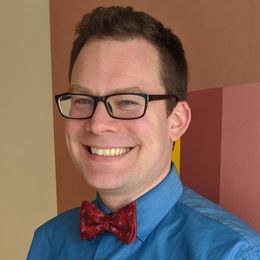It's a Terrific Time to Be a Geriatrician
Our expertise is needed now more than ever, and opportunities for innovation are abundant
Throughout my medical training I was told two wildly different predictions of what geriatricians — the kind of doctor I wanted to be — were in for. One was that they were in extremely high demand; the other that they were doomed.

Lately, voices for the second view have become louder, with eminent geriatricians publicly lamenting the state of our profession. I am now a recently minted geriatrician, and my experience does not align with this gloomy outlook. Rather, the profession of caring for older adults is at a moment of incredible ferment and opportunity.
The profession of caring for older adults is at a moment of incredible ferment and opportunity.
There is, of course, the need for more geriatricians to care for our growing population of older adults. Beyond clinical care, though, is perhaps less obvious — but equally critical — work for geriatricians: creating and running clinical programs, improving how we care for older adults and teaching our skills to others.
Practice Opportunities Aplenty
The bull market for geriatricians is also attributable to changes in our ability to manage medical conditions among older adults — from heart disease to dementia to cancer — which call for the special training and insight of geriatricians. Rapid advances in our understanding of aging and how to care for older adults promise still more changes — and opportunities — on the horizon.
Likewise, major recent health care initiatives cry out for leadership from geriatricians. These include Medicare's new model for comprehensive, coordinated dementia care and the Age Friendly Health Systems program, which makes health systems more responsive to the needs of older adults.
These go to the heart of what geriatricians do: understand the goals and needs of older adults to manage complex conditions. For rising doctors who want to make a difference, have a bit of ambition or simply want more control over their careers, becoming a geriatrician is an invitation to go further than one could elsewhere.
There is no time like the present to be a geriatrician.
The story is different for the people who need our care. Despite the wealth of opportunity, less than half of the training spots for geriatric medicine get filled each year. This has led to a shortage of geriatricians.
This shortage is a serious threat to the well-being of older Americans, who rely on the person-centered, interprofessional and nuanced care we are uniquely trained to provide. Geriatricians have been at the core of innovations in caring for older adults. Thinner ranks mean less progress to come.
Teach Gerontology Better
How can we get more future doctors to seize this opportunity? First, and most important, medical students need to see and learn more geriatrics. Currently, medical schools rarely teach how our bodies change as we age. Common health problems for older adults, such as falls, are absent from standard curricula.
Most puzzlingly, while it is accepted that all medical students need to spend two to three months training in a pediatric clinic — even those who will never care for children in their practice — geriatrics remains an optional experience of only a few weeks.
Expanding coursework on aging and requiring students to rotate in geriatrics are low-hanging fruit for reformers. Greater exposure will get more students to consider geriatric medicine as a career and make everyone better at caring for older adults.
Second, hospitals and insurers must make geriatrics a core part of their organizations. Geriatricians touch almost all parts of the health care system: assisted living facilities, pre- and post-surgery care, intensive care units and patients' homes.
Health care organizations should all have a Chief Aging Officer, a geriatrician with the resources and authority to shape the organization as a whole when it comes to caring for older adults along the health care continuum.
Forward-thinking health systems, such as the Department of Veterans Affairs in the public sector as well as private groups like ChenMed, have geriatricians in positions of leadership. These leaders can oversee and help other physicians provide better care for their older patients.
This needs to become standard: health care organizations should all have a Chief Aging Officer, a geriatrician with the resources and authority to shape the organization as a whole when it comes to caring for older adults along the health care continuum.
Create Value for Patients
Last (but not least), geriatricians — like physicians in other non-procedural specialties such as infectious diseases and primary care — need to be appropriately compensated for their work. There is growing evidence showing that geriatricians create value in better quality of life, in care that is aligned with patient priorities, and in dollars and cents.
Reimbursements from Medicare and private insurers should reflect this value; this could be as simple as creation of a billing code for visits with a board-certified geriatrician to as complex as billing reform.
The present of geriatric medicine is bright. If we want Americans to go into old age with dignity, independence and engagement in their communities, however, its future must be brighter still.
Editor’s note: This work does not represent the views of the Department of Veterans Affairs or the United States Government.


